A bright and tasty decoration for your summer cottage - the “Monisto pink” tomato
Cherry tomatoes are loved for their attractive appearance and rich taste. Cocktail tomatoes look beautiful in salads and preserves. They become a stylish decoration for cold cuts and main courses.
Among all cherry tomatoes, the Monisto group of tomatoes is popular. They are distinguished by beautiful tall bushes, which are literally strewn with fruits collected in clusters. The variety has several varieties. There are yellow, green and chocolate fruits with this name. Fans of dull berries will like the Monisto pink tomato. Why is this variety so attractive and what is its agricultural technology, read on.
Description of the variety
Tomato Monisto pink is a variety bred by domestic breeders. It is not yet in the State Register. Despite this, many Russian companies produce seeds. The variety is also known in the countries of the former CIS.
Distinctive features
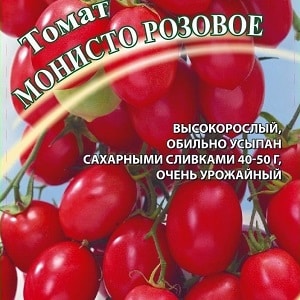 Monisto pink - cocktail variety of tomatoes. Its fruits are small in size. The maximum weight of berries is 50 g.
Monisto pink - cocktail variety of tomatoes. Its fruits are small in size. The maximum weight of berries is 50 g.
Pink cherry tomatoes have a high content of iodine and other beneficial microelements. Thanks to this, they have a positive effect on the condition of the thyroid gland, stimulate metabolic processes, help strengthen the immune system, and improve mood.
One more A feature of the cherry tomato variety is the yield. On average, 6 clusters are formed on one plant, each of which contains up to 50 berries.
The variety is considered unpretentious. However, it still needs pinching and staking due to the high growth of the bush.
This is interesting! Among all the varieties of tomatoes from the Monisto group, it is the variety marked “pink” that has the largest fruits.
General characteristics
The characteristics of Monisto pink will please both beginners and experienced gardeners.
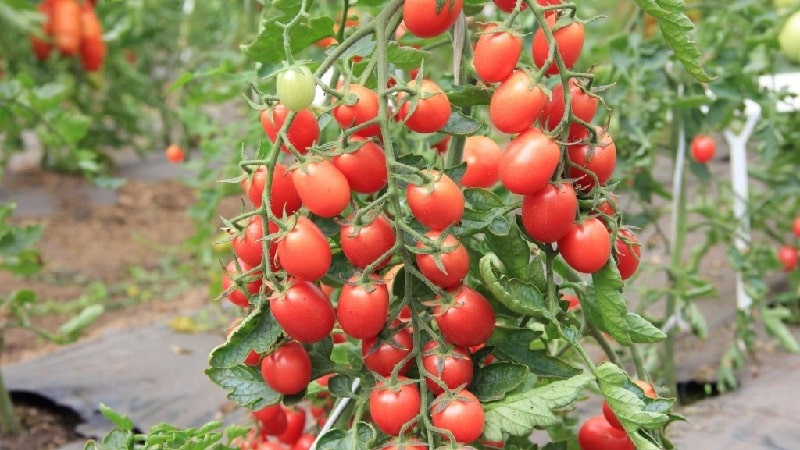
From the description it becomes clear that it is not difficult to grow it on your own plot:
| Parameter | Indicators |
| Bush type | Indeterminate tomato. The bush reaches 1.8–2 m. Covered with an average amount of foliage. Weakly branched. Often it independently forms into one stem. The leaves are dark green, small in size, rough, and have blistering seals. The first inflorescence is formed in the axil of 7-8 leaves, the next ones - every 2 leaves. |
| Growing method | In the southern regions it is cultivated mainly in open ground. In the central and northern regions - in greenhouses. |
| Productivity | High. Up to 2.5 kg of berries are harvested from one plant. |
| Fruit | Cherry. The weight of each varies between 30–50 g. The shape of the berries is oblong, without ribbing at the base. The length does not exceed 6 cm. Tomatoes have a rich pink color inside and outside. The photo shows why the variety got its name. There may be a light spot at the base. The taste is rich, sweet, without pronounced sourness, with a tomato aroma. Note the presence of a fruity aftertaste. One fruit has 2-3 chambers with an average number of seeds. |
| Transportability | High. Tomatoes have thick skin, so they do not lose their shape during transportation and can be stored for more than 3 weeks. |
| Ripening time | Mid-season variety. The berries will ripen 110–120 days after planting the seeds. Fruiting continues until the end of summer. |
| Disease resistance | It is immune to most diseases characteristic of nightshade crops, including late blight. |
Growing seedlings
Monisto rosea is grown in seedlings. Sowing begins 60 days before planting in a permanent place. Before growing, some gardeners prefer to check whether the lunar day is suitable for these purposes. According to the method, sowing planting material is favorable in Scorpio days.
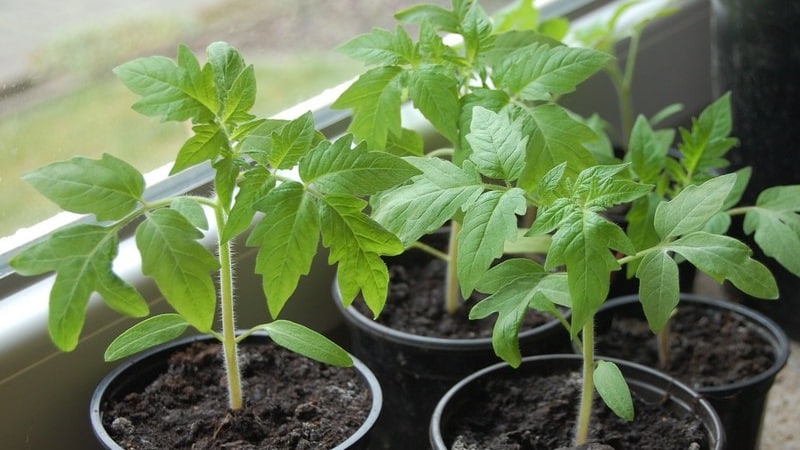
Seed treatment
Seeds purchased at the store should be checked for expiration dates.. If planting material is collected from your own harvest, remove all darkened and damaged specimens.
If the grains have not been pickled in the factory, this is done at home. To do this, they are soaked in one of the products:
- for half an hour in a light pink solution of potassium permanganate (1 g of potassium permanganate per 100 ml of water);
- for a quarter of an hour in hydrogen peroxide;
- for 12 hours in a solution of soda (1 teaspoon per 1 glass of water);
- for 12 hours in a mixture of water and aloe juice in equal proportions;
- at 6 o'clock in "Fitosporine».
After preventive treatment, the seeds are washed under running water.. Then dry with a paper towel.
To speed up the appearance of the first shoots, stimulate seed growth in one of the following ways:
- Soaking in water. The grains are wrapped in gauze napkins moistened with warm water. Rags with planting material are placed in a saucer, covered with film and placed in a warm place. As the liquid dries, add more liquid. Seeds are planted after germination. This takes 3 days.
- Soaking in a commercial growth stimulant: “Epine”, “Zircone”, sodium humate. The processing time for planting material is indicated in the instructions.
- Soaking in folk remedies: aloe juice, honey water (1 teaspoon of honey per 1 tbsp.water). The duration of the procedure is 12 hours.
- Cold treatment. The seeds are placed in the refrigerator for 5 days, then transferred to a warm place for 1 day and planted.
This is interesting:
Preparing containers and soil
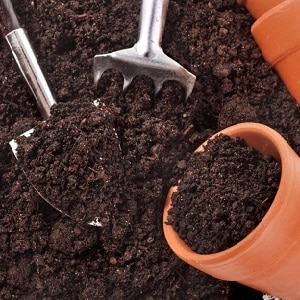 The soil for tomatoes is chosen to be nutritious but light. It is prepared from equal proportions of peat, humus, black soil and sand. Tomatoes do not like acidic soil, so when the pH is high, ash is added to it.
The soil for tomatoes is chosen to be nutritious but light. It is prepared from equal proportions of peat, humus, black soil and sand. Tomatoes do not like acidic soil, so when the pH is high, ash is added to it.
Stores sell ready-made soil. For tomatoes, use a universal mixture for seedlings. The earth is disinfected by pouring a strong solution of potassium permanganate (5 g per 100 ml of water) or boiling water, or calcined in the oven.
The containers for sowing seeds are: special boxes, trays or other containers of suitable size. If you plan to sow a small amount of seeds, it is advisable to use peat tablets.
Advice. It is convenient to use cake packaging to sow seeds. Its lower part is used as a container for sowing seeds, and the upper part is used instead of film to create a greenhouse effect.
Containers are also disinfected. To do this, just soak them for half an hour in a dark pink solution of potassium permanganate.
Sowing in boxes and peat tablets
 Often the seeds of Monisto rosea are planted in peat tablets. They do this as follows:
Often the seeds of Monisto rosea are planted in peat tablets. They do this as follows:
- The tablets are placed in a deep container and soaked in boiling water. Water will be absorbed into the pressed blanks and they will swell. If necessary, add new liquid to the container.
- When the tablets swell (they should form bags of soil substrate), they are removed from the container, turned upside down and excess liquid is allowed to drain.
- In the peat of each bag, 1 seed is buried 1 cm using a toothpick. Tablets with seeds are placed in one deep container, covered with film and put in a warm place.
Plant Monisto rosea without tablets. To do this, the boxes are filled with soil, which is abundantly moistened with warm water. Grooves 1 cm deep are made in it at a distance of 2 cm from each other. The seeds are placed in grooves at intervals of 2 cm and sprinkled with soil. The boxes are covered with film and placed in a warm place.
Seedling care and possible problems
Growing tomato seedlings is not difficult. You just have to study basic principles of plant care:
- Boxes with seeds are placed in a warm place with temperatures from +23 to +26 °C. The higher the soil temperature, the faster the seeds will germinate. For example, if at +20...+23 °C the first shoots will appear only after a week, then at +26 °C the seeds will germinate in 2-3 days.
- After the seeds germinate, remove the film and place the boxes with seedlings in a well-lit place.
- Before grains germinate, the soil is moistened with a spray bottle.. You cannot spray the seedlings. To prevent water from getting on the above-ground part of the tomatoes, use a pipette or syringe to moisten them. Plants planted in separate pots can be conveniently watered from a watering can with a narrow spout.
- After the appearance of 2-3 non-cotyledon leaves tomatoes are dived into individual containers. A layer of drainage must be poured onto the bottom of the pots.
- After the pick start feeding tomatoes. The first time - after 10-14 days. The next two feedings are done with an interval of 2-3 weeks. The last time fertilizer is applied is 3 days before transplanting vegetables to a permanent place.
- 2 weeks before transplant The seedlings are hardened into the ground and taken out into the fresh air.
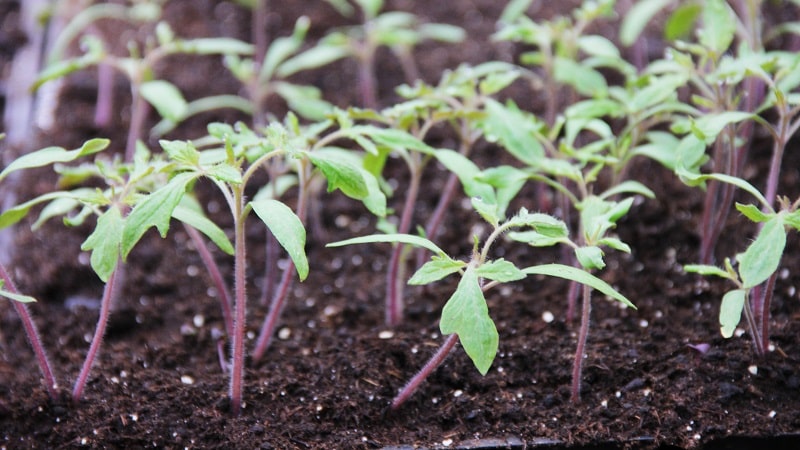
When growing seedlings, beginning gardeners face a number of problems.. The list contains the most common of them:
- Loss of turgor by plantswhen they turn yellow and become lethargic, this indicates a failure to comply with watering conditions. The problem occurs both when the soil dries out and when watering too frequently. Depending on the reason, to avoid plant death, the frequency of watering should be increased or decreased.
- The appearance of mold on the soil with seeds indicates waterlogging of the soil. To solve the problem, remove the affected layer so that the planting material remains in the soil. A layer of new disinfected soil is poured on top. The soil is watered with a solution of potassium permanganate.
- Pulling seedlings occurs when there is a lack of light. To avoid this problem, gardeners recommend using fluorescent lamps. It is also useful to keep the seedlings in a cool place for the first week after seed germination.
Agricultural technology Monisto pink
The variety is grown in open ground in the southern regions and in greenhouses in the northern and central. In the first case, the seedlings are planted in a permanent place at the end of April, in the second - in the first half of May.
Before planting seedlings in a permanent place, they need to be prepared. To do this, the plants are watered and fed with phosphorus products 3 days before picking.
Planting seedlings in open ground
It is better to place beds for tomatoes in the most illuminated area of the garden.. No other nightshade crops should grow in this place for the last 3 years. When grown in open ground, potatoes are not planted next to tomato beds. Tomatoes are not grown in a greenhouse together with other plants.
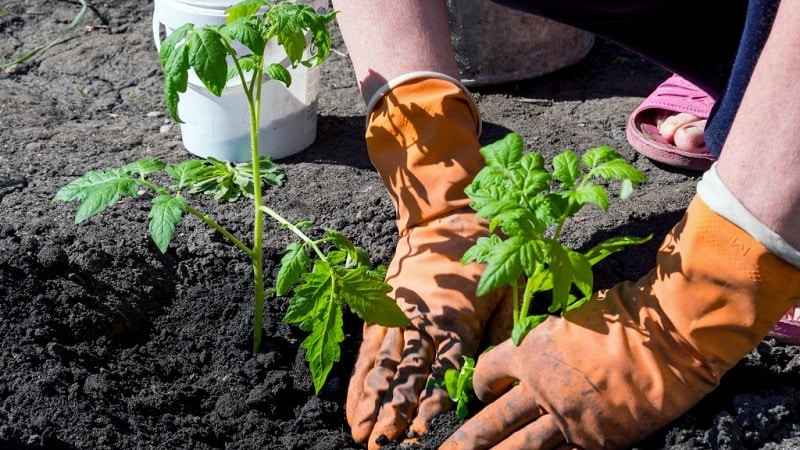
In autumn, the area of the garden where vegetables will grow is cleared of weeds and remains of cultivated plants. Humus and ash are added to the ground. In the spring, the beds are dug up and watered with infusion of chicken manure. Holes for planting tomatoes are dug in a checkerboard pattern. in rows. At 1 m2 do not place more than 4 plants.
1 tbsp is poured into each hole. a spoonful of ash or granular fertilizer long-acting. Then the plants removed from the pots along with a lump of earth are placed in the recesses. The roots are covered with soil and compacted. Then water, using 1 liter of water for each bush.
Note! Seedlings grown in peat tablets are not removed from the container when planted in open ground. The same applies to plants in peat pots.
Care
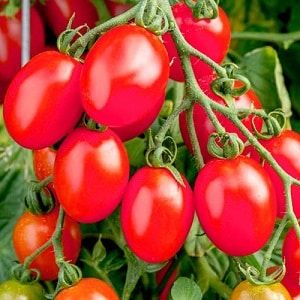 In most cases Monisto pink independently forms into 1-2 stems, since it does not form a large number of stepsons. The lateral processes are removed when they appear.
In most cases Monisto pink independently forms into 1-2 stems, since it does not form a large number of stepsons. The lateral processes are removed when they appear.
It is necessary to tie up indeterminate plants. Otherwise, they will break under the weight of the fruit. For these purposes, wooden supports or plastic trellises and synthetic thread are used.
The growth of tomato Monisto pink is artificially limited. The top is pinched at the end of July, leaving 3 leaves above the last cluster.
As the top layer dries, the soil is moistened. Use 1.5–2.5 liters of warm, settled liquid per plant. Tomatoes are watered at the root so that water does not fall on the above-ground part of the vegetable.
The first fertilizing is applied 14 days after transplanting the seedlings to a permanent place. Then the tomatoes are fed every 2 weeks. Alternate organic (mullein, humus, chicken droppings) and mineral (ammonium nitrate, superphosphate, potassium salt) fertilizers.
Read also:
Secrets of success
By following the care rules, every gardener will be able to grow his own tomatoes. If you use a few tricks, vegetable yields will be significantly higher:
- To speed up the formation of ovaries, tomato bushes are regularly shaken during flowering. This must be done carefully so as not to damage the stem.
- It is useful to plant basil and rosemary between the tomato beds. This will attract beneficial insects and repel pests.
- Yellow leaves and greenery from the lower part of the bush (up to 1 cluster) are removed. Thanks to this, plants have the strength to form and ripen fruits.
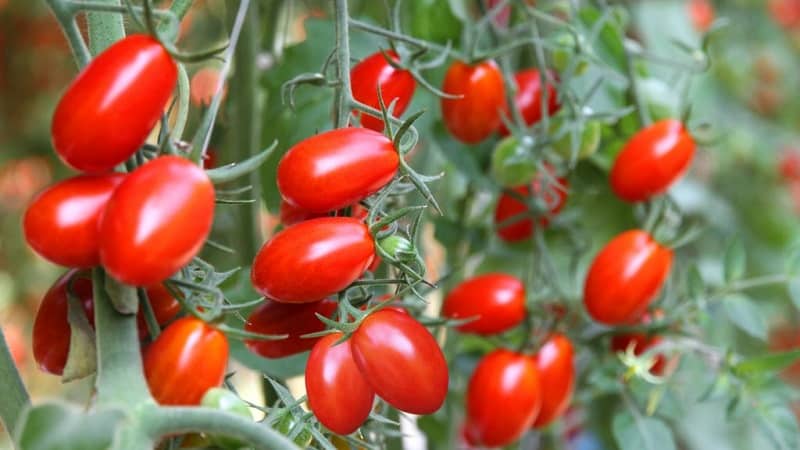
Diseases and pests
Variety Monisto pink is resistant to tomato diseases. However, there are still risks of crop contamination. To reduce them, you should follow the rules of prevention:
- All tools with which plants will interact are disinfected before use. Tomato beds must be cleared of plants on which fungal spores and viruses remain.
- It is necessary to follow the rules for selecting and preparing soil and planting material. Don't neglect the care tips.
- During epidemics of tomato diseases, plants are regularly sprayed with Bordeaux mixture. Diseased bushes are removed from the beds and burned.
- Tomatoes are also treated against insects. Soap solutions (a piece of grated laundry soap in a bucket of water) and herbal decoctions (dandelion, wormwood, celandine) are considered effective but safe remedies.
The nuances of growing in open and closed ground
When grown in a greenhouse It is important to provide tomatoes with an optimal climate.This is easy to do: you should regularly ventilate the room by opening the windows.
In the open ground It is important to protect the plants from night frosts in the first 2 weeks after planting. To do this, cover the tomato beds with film in the evening.
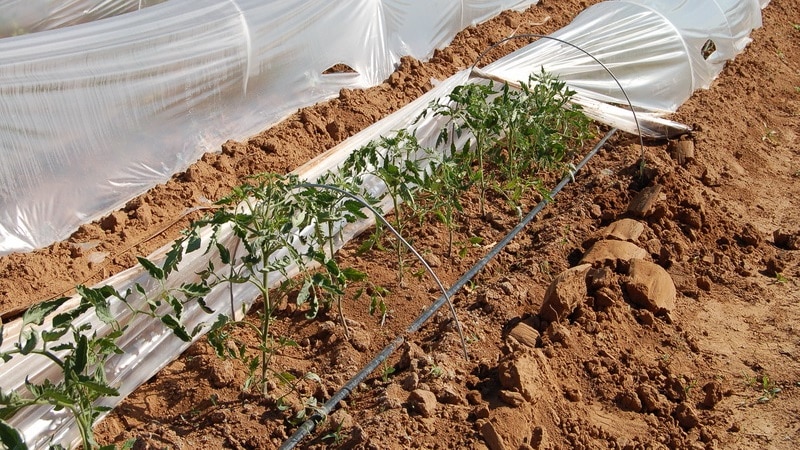
The frequency of watering in open ground and greenhouse varies. In the first case, the soil is moistened 2-3 times a week, and in the second - only 1 time.
Harvesting and application
Monisto rosea will sing at the end of June. The variety is distinguished by its friendly ripening. The harvest is harvested in whole bunches. These tomatoes also ripen when harvested. However, in this case they will be less sweet.
Monisto pink - a universal variety. Its berries are both consumed fresh and used whole for preservation.
Advantages and disadvantages
The positive qualities of Monisto pink include the following:
- has immunity to major nightshade diseases;
- has a good fruit taste;
- has high productivity;
- the fruits ripen together;
- does not form a large number of stepsons;
- easy to care for;
- does not lose shape during transportation.
Disadvantages include: the need for gartering and pinching.
Color varieties
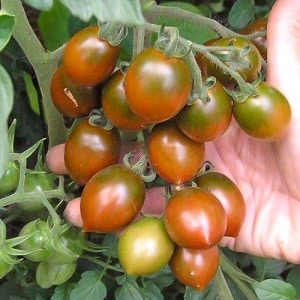 Monisto is a whole group of tomato varieties of different colors.. They have the same characteristics, but differ in the color and properties of the fruit:
Monisto is a whole group of tomato varieties of different colors.. They have the same characteristics, but differ in the color and properties of the fruit:
- Monisto amber. Yellow-fruited variety of cherry tomatoes. Its oval berries reach a weight of 20–35 g. The taste has a more pronounced sourness than that of the pink-fruited Monisto. Yellow tomatoes are less allergenic. They contain a lot of beta-carotene and lycopene, which have a positive effect on the functioning of blood vessels, the heart and visual acuity.
- Monisto emerald. Green-fruited tomato (see photo). The berries weigh 20–35 g.Tastes sweet with a fruity aftertaste. Contains a lot of chlorophyll. Beneficial for the muscular and skeletal systems of the body, metabolism and immunity.
- Monisto chocolate. Brown fruits with brown spots. The taste is sweet with fruity notes. It contains a lot of anthocyanin, which acts as a strong antioxidant.
Farmer reviews
Reviews from gardeners about Monisto pink are mostly positive. All varieties from this group attract the attention of farmers.
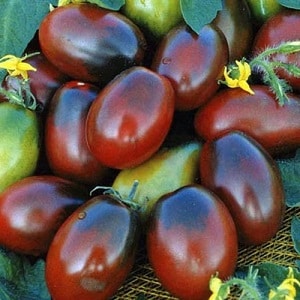 Irina, Adler: “Every year I plant several Monisto bushes. At the same time, I prefer to grow several flowers of this variety at once. I tried Pink, Amber and Chocolate (on the picture). I also want to buy Emerald. I am very pleased with the result. In most cases, tomatoes themselves form into 2 stems. From 1 sq. m I collect more than a 5-liter bucket of berries. Very tasty fresh. But I prefer to cover such berries of different colors for the winter. Looks very nice".
Irina, Adler: “Every year I plant several Monisto bushes. At the same time, I prefer to grow several flowers of this variety at once. I tried Pink, Amber and Chocolate (on the picture). I also want to buy Emerald. I am very pleased with the result. In most cases, tomatoes themselves form into 2 stems. From 1 sq. m I collect more than a 5-liter bucket of berries. Very tasty fresh. But I prefer to cover such berries of different colors for the winter. Looks very nice".
Vitaly, Solnechnogorsk: “I grow Monisto rosea in a greenhouse. My favorite are cherry tomatoes. Pink with a pronounced taste and pleasant aroma. I use seeds from my own harvest. I simply collect seeds from the fruits that have ripened on the bush, wash them to remove the pulp and dry them. I tried Monisto Emerald and Monisto Amber. Liked it too".
Conclusion
Monisto rosea is a cocktail tomato that impresses both beginner and experienced gardeners. The fruits of this variety are collected in clusters of 50 pieces. Thanks to this, during the period of berry ripening, the plants look very decorative. These tomatoes taste good too.
It is not difficult to grow Monisto of any color (pink, green, chocolate and amber). The culture needs staking and shaping, but does not form many stepsons and is undemanding in care.